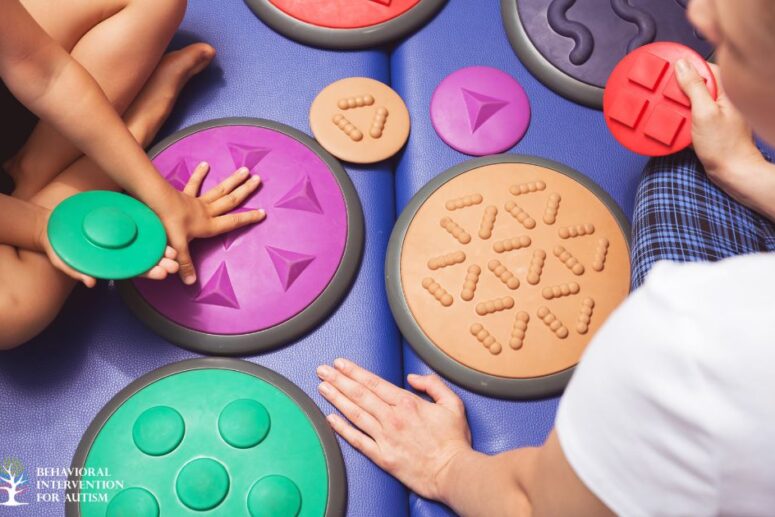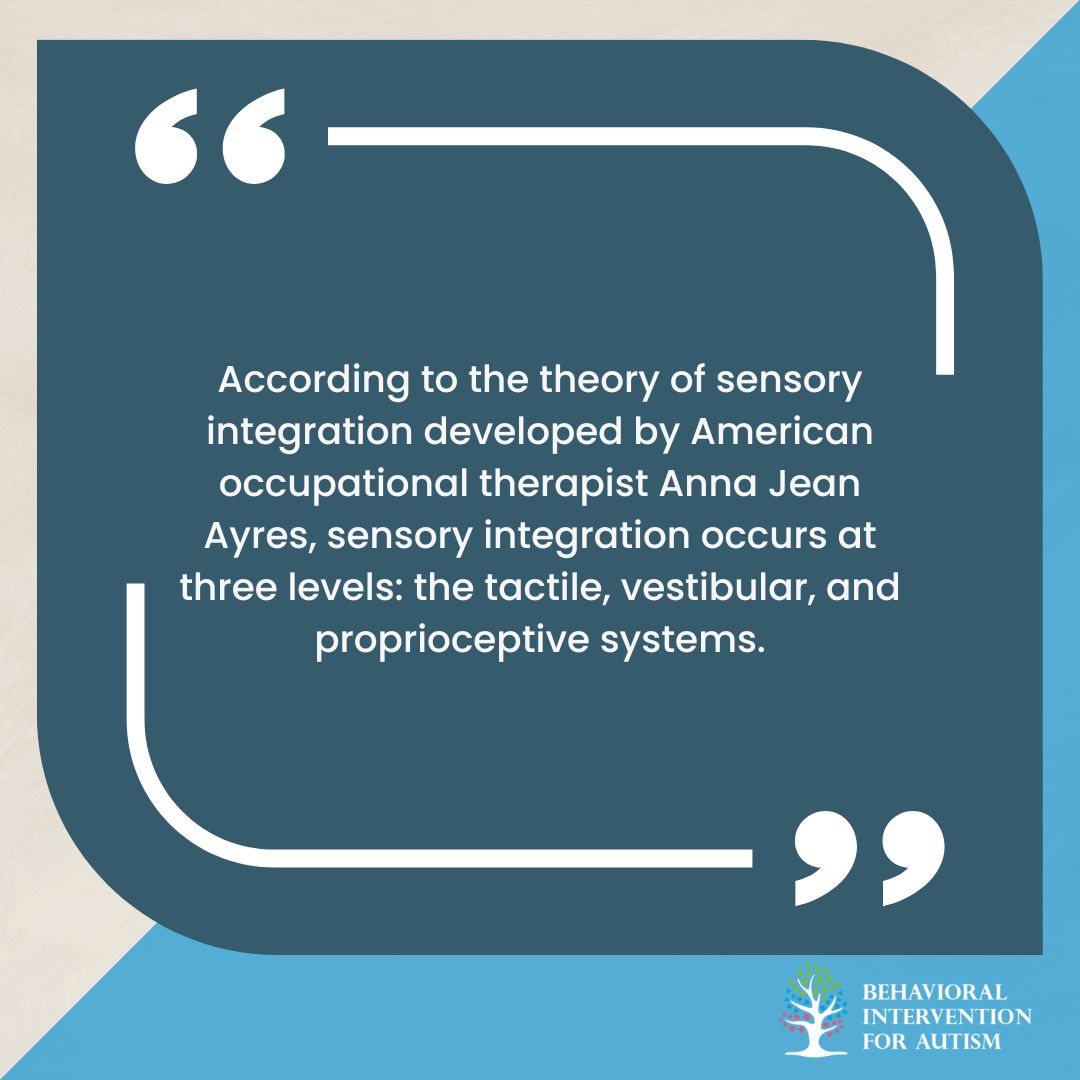
Table of Contents
Sensory integration is a crucial aspect of how we understand and interact with the world around us. However, for some individuals, particularly those on the autism spectrum, sensory integration can pose significant challenges, impacting their daily lives in various ways.
The Basics of Sensory Integration Therapy
Sensory integration therapy is a specialized approach designed to address difficulties related to sensory processing. This therapy, often referred to as Ayres Sensory Integration (ASI), aims to alleviate symptoms associated with sensory integration dysfunction, which can range from hypersensitivity to certain stimuli to difficulties with motor coordination.
Developed in the 1970s, ASI combines assessment tools to gauge sensory integration issues with therapeutic techniques to address them. Trained occupational therapists play a central role in delivering this therapy, utilizing a range of activities and tools to stimulate the senses, promote motor planning, encourage movement, and foster adaptive behaviors.
Who Can Benefit from Sensory Integration Therapy?
Sensory processing dysfunction poses significant challenges for autistic individuals, impacting their ability to interpret and respond to sensory stimuli effectively. This dysfunction can manifest in various ways, from hypersensitivity to certain stimuli to seeking sensory input through repetitive behaviors.
According to the theory of sensory integration developed by American occupational therapist Anna Jean Ayres, sensory integration occurs at three levels: the tactile, vestibular, and proprioceptive systems. Understanding the intricacies of these dysfunctions is essential for tailoring interventions like sensory integration therapy to address individual needs.
The tactile system processes information related to touch, light, pain, and pressure, facilitating awareness of the environment. The vestibular system, located in the inner ear, detects movement and changes in body position. Meanwhile, the proprioceptive system provides subconscious awareness of body position through muscles, joints, and tendons.
Dysfunction in these sensory systems can significantly impact a child’s daily life. When the tactile system is affected, a child may withdraw from physical contact, exhibit aversions to certain textures, or struggle with clothing preferences.
Sensitivity to vestibular stimulation can result in fear of activities such as swinging or climbing, while under-stimulation may manifest as hyperactive behaviors. Weaknesses in the proprioceptive system can lead to difficulties in body awareness and manipulation of objects.
Understanding Sensory Integration Therapy for Autism
Sensory integration therapy (SIT) is a child-centered intervention program designed to improve the integration of sensory information in children with autism. By utilizing sensory-rich activities, SIT aims to help children become more adaptive to sensory input and enhance their overall functionality.
Sensory integration therapy employs a variety of techniques to engage children in challenging sensory processing activities. Qualified occupational therapists collaborate with parents and other clinicians to develop tailored strategies that target specific sensory difficulties.
Play activities, such as swinging, trampolining, or sliding, are utilized to stimulate sensory integration and promote adaptive responses. By focusing on individualized intervention and addressing unique sensory experiences, sensory integration therapy aims to optimize the sensory integration system and mitigate dysfunction.
The Role of Sensory Integration Therapy
Sensory integration therapy targets specific sensory challenges through a variety of activities and interventions. These activities are designed to gradually expose children to sensory input in a controlled and supportive environment.
Examples of sensory integration activities include swinging, brushing, playing in a ball pit, and engaging in tactile experiences. By providing structured opportunities for sensory exploration, therapy aims to improve sensory processing abilities and enhance overall functioning.
Benefits Across Age Groups
Sensory integration therapy is not limited to any specific age group, from infants to adults. In infants and toddlers, therapy may focus on promoting sensory exploration and facilitating early developmental milestones such as motor skills and socialization.
For school-age children, therapy can support academic success, improve self-regulation, and enhance social interactions. Adolescents and adults may benefit from therapy by developing strategies for managing sensory challenges in various environments.
Individualized Approach
In sensory integration therapy, interventions are customized to suit each child’s specific sensory profile and developmental stage. This individualized approach ensures that therapy effectively addresses the unique needs and preferences of every individual.
By targeting sensory processing difficulties early and offering tailored support, therapy empowers individuals to engage more fully in daily activities. Moreover, it fosters independence and facilitates their journey towards realizing their full potential in various aspects of life.
Research on Sensory Integration Therapy
Research on sensory integration therapy, particularly its efficacy in addressing sensory and motor difficulties in autistic children, has been a subject of considerable investigation. While some studies have shown promise, the overall body of research remains limited, with mixed results observed in meta-analyses.
Sensory integration therapy has garnered significant attention as one of the most sought-after interventions for autism. Studies conducted between 2006 and 2017 have evaluated the effectiveness of ASI therapy, particularly in children aged 4 to 12 years, indicating positive outcomes within the autistic population.
However, despite these findings, the efficacy of sensory integration therapy remains a topic of ongoing research and debate. Meta-analyses examining its impact on sensory and motor development have yielded varied results. While some studies have reported improvements, the overall effect has not reached statistical significance.
For parents and caregivers considering sensory integration therapy for their loved ones, collaboration with trained professionals is essential. Moreover, exploring alternative interventions and seeking guidance from healthcare providers can offer a comprehensive approach to managing sensory challenges in individuals with autism.
While research continues to investigate the effectiveness of sensory integration therapy, it is crucial to acknowledge both its potential benefits and limitations. By engaging in evidence-based practices and remaining open to alternative interventions, parents and caregivers can make informed decisions regarding the best course of action.
The Takeaway
Sensory integration therapy holds promise as a potential intervention for individuals with sensory processing difficulties. By collaborating with healthcare professionals and exploring various treatment options, individuals and families can work towards enhancing sensory experiences and improving quality of life.
Sources:
- https://www.ncbi.nlm.nih.gov/books/NBK581602/
- https://thejmch.com/index.php/thejmch/article/view/722
- https://www.healthline.com/health/autism/sensory-integration-therapy#bottom-line
- 9 Common Obsessions of Children With Autism You Should Know - February 25, 2025
- What is Neurodiversity? A Guide to Embracing Differences - February 25, 2025
- Understanding Hyperfocus in Autism: What It Means and Why It Happens - February 25, 2025



